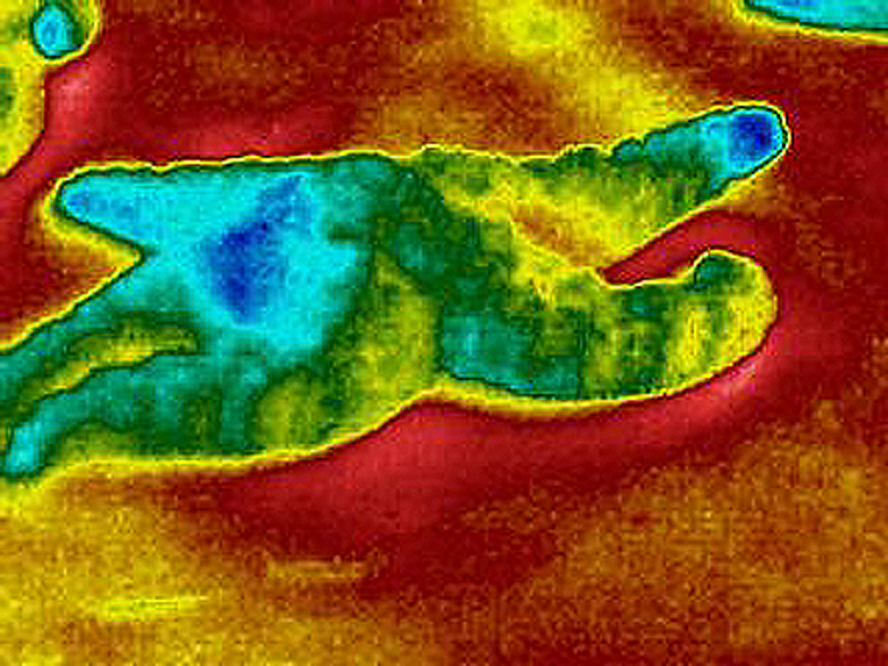
You can tell when a starfish is too hot – it loses an arm. The remarkable behaviour is part of a surprising strategy that may allow the animals to survive in warmer waters than previously thought possible.
Ecologists tend to think that cold-blooded animals, called ectotherms, are incapable of changing their body temperature and instead simply take on the temperature of their environment. Sylvain Pincebourde at the Institute of Research on Insect Biology in Tours, France, and Eric Sanford at the University of California, Davis, had a hunch that things are more complicated than that.
To investigate, they collected 70 ochre starfish (Pisaster ochraceus) from the coast of California. They housed them in 10 tanks, set to different temperatures ranging between 26˚C and 42˚C, and monitored the body heat of the starfish with infrared cameras.
Their work confirmed that body temperature varies across the starfish rather than being uniform. Each animal’s central disc was always cooler than its five arms, by anywhere from 3˚C to 5˚C.
If the temperature of its central core rose above 35 ˚C, the starfish died – its vital organs unable to function in the heat, says Sanford. Its arms, however, could withstand those temperatures – although if they remained at around 35 ˚C for more than a few days, one or more of the arms typically turned soft and fell off.
Heat sinks
The team isn’t sure how starfish regulate the temperature in the different parts of their bodies. One possibility is that the animals actively divert heat into their arms, which can then release the heat into the water relatively efficiently because of their large surface area and small internal volume.
This could explain why animals that are particularly warm for an extended period lose an arm or two: by using them as heat sinks, the starfish may thermally damage their arms beyond repair.
We know that starfish can lose arms to predators and later regrow them again, but this is the first time researchers have shown that arm loss can be related to thermal regulation.
Musselling in
Starfish are a key predator off the coast of California. “They influence what the populations of mussels and other animal communities look like,” says Sanford. This means any change to the starfish population as a result of climate change could trigger a cascade of knock-on effects further down the food chain. So understanding how these animals respond to temperature change should help ecologists understand how regional changes in climate might affect coastal ecosystems, he says.
Mark Denny of Stanford University in California studies the mussels the starfish prey on. “The mussels for their part would love to not have the starfish around,” he says. “The fact that the starfish are good at cutting losses and surviving [in warmer water] is bad news for the mussels.”
Any evidence that some marine organisms have ways to deal with warmer water could be significant as global temperatures continue to rise. “[The work] might spur other researchers now to look at other keystone species in the same way, with physiologists and ecologists coming together to understand how temperature changes will affect populations and communities,” says Denny.